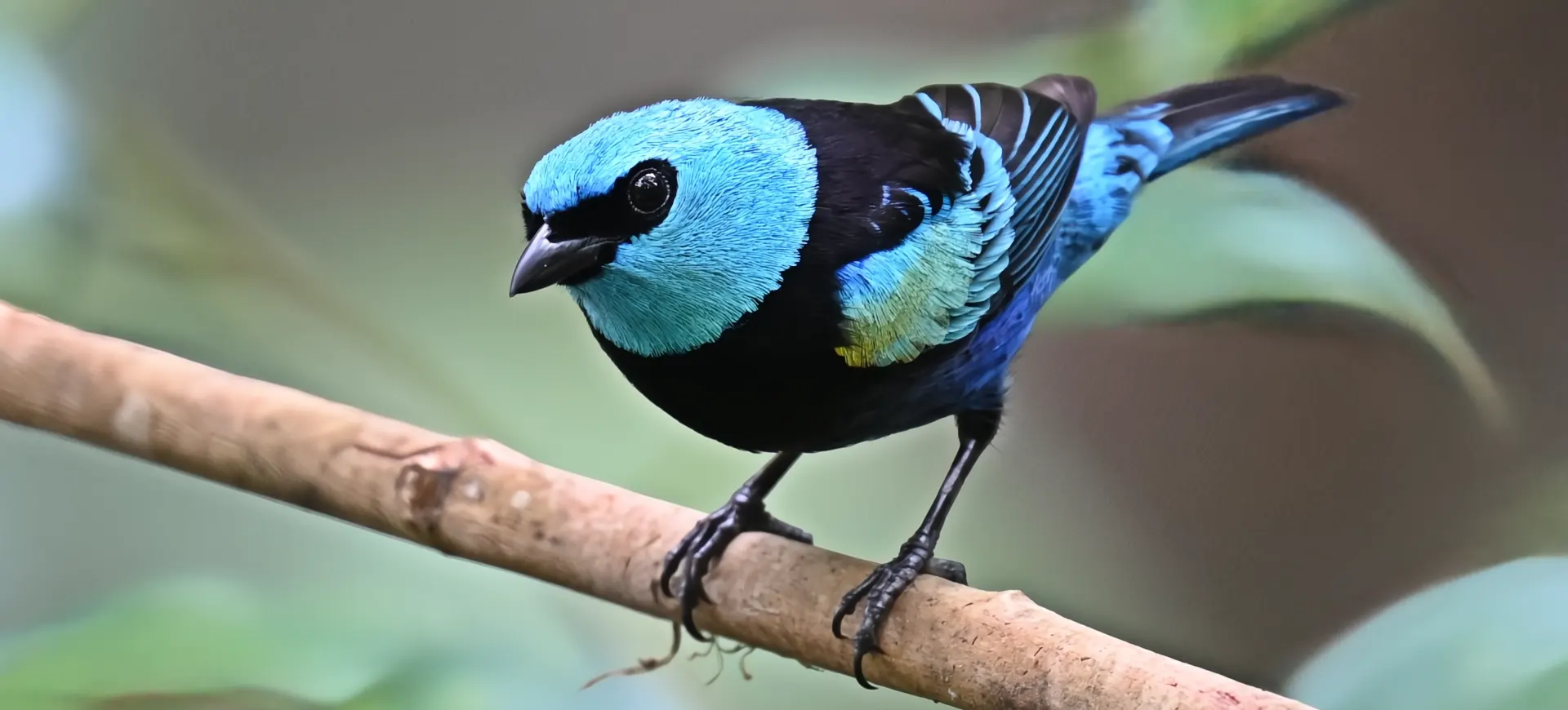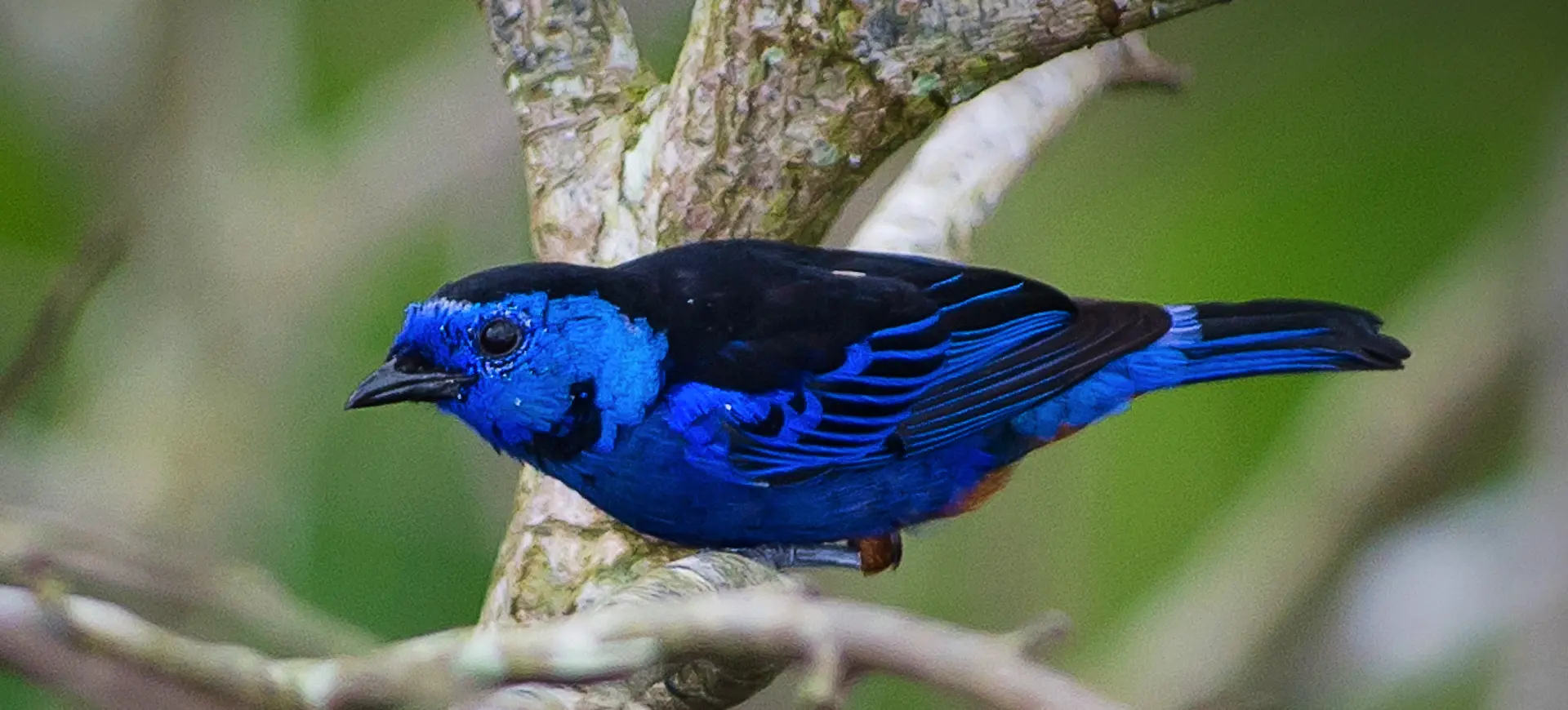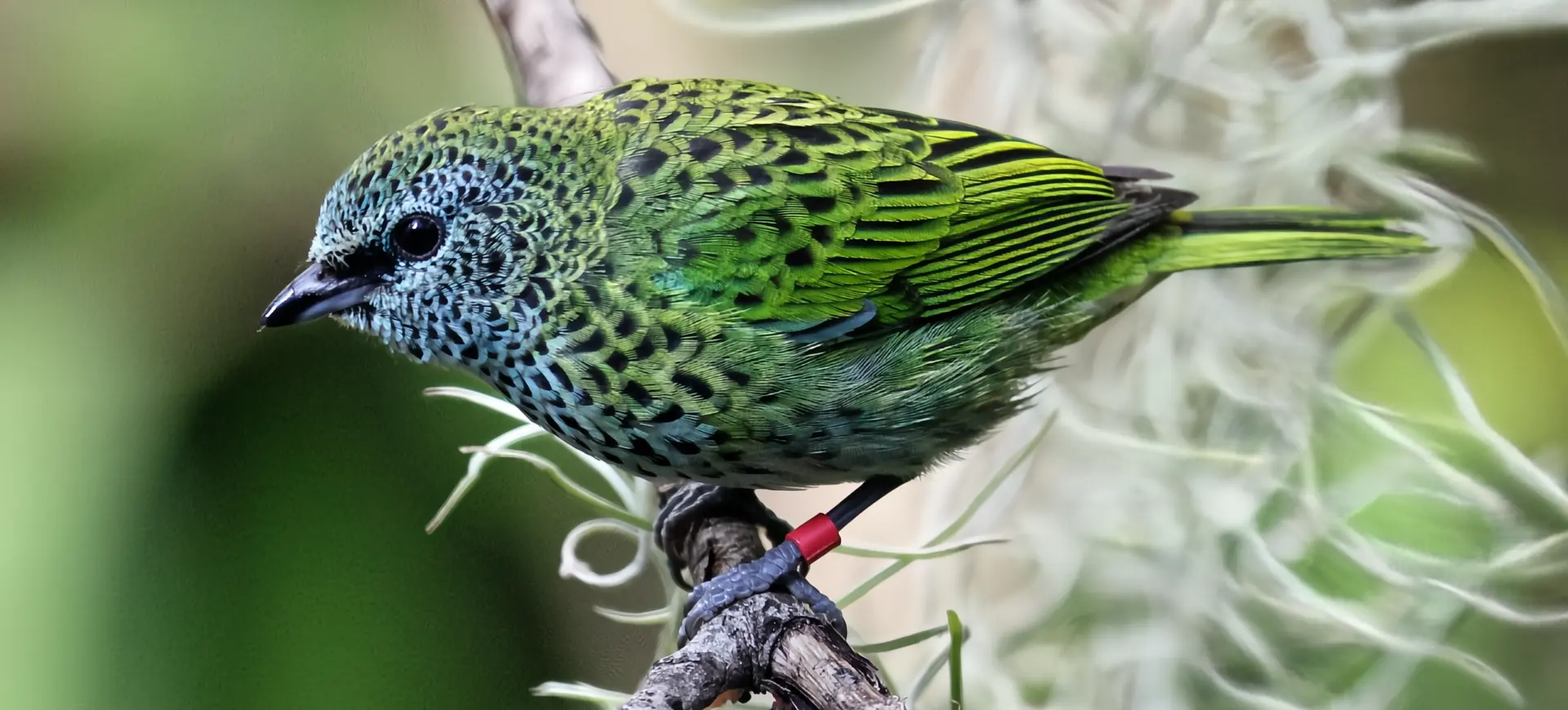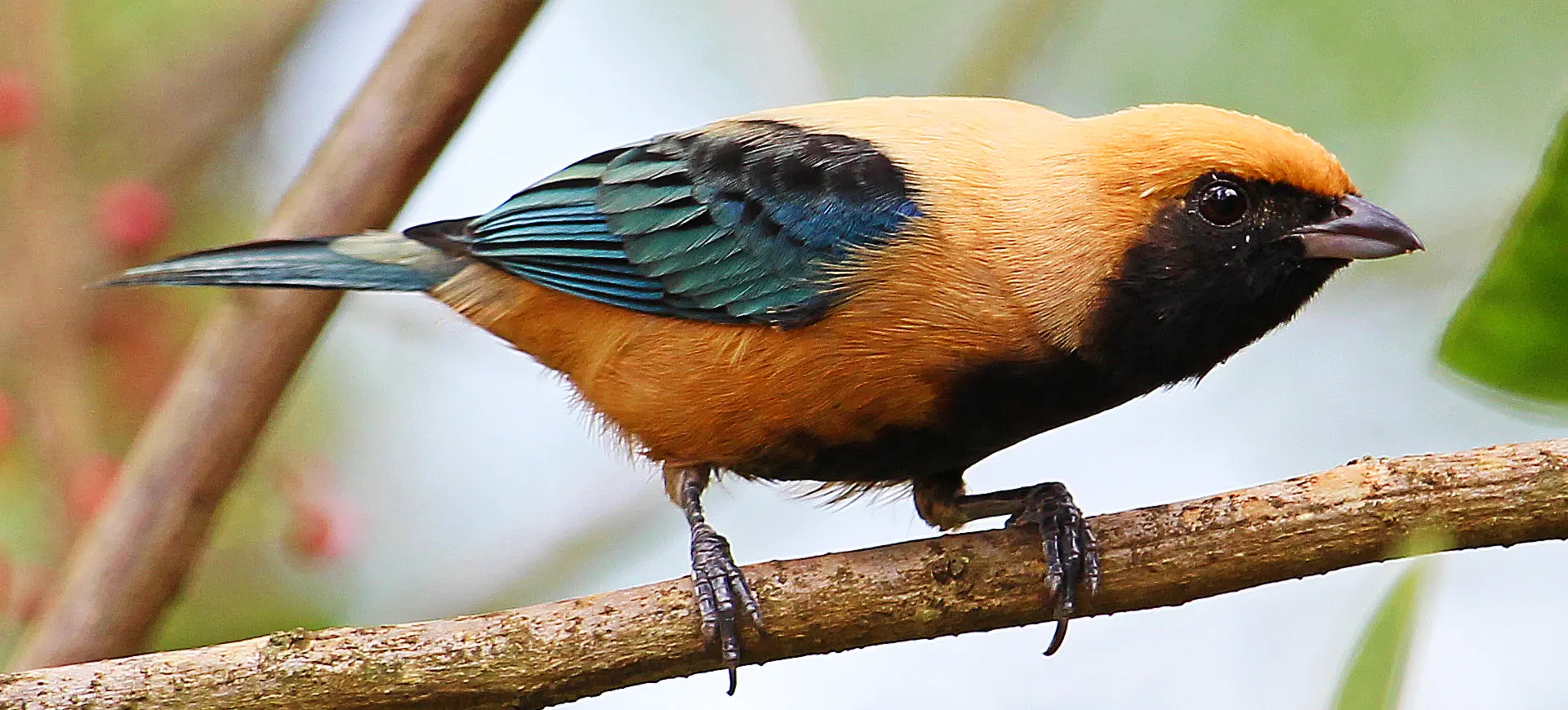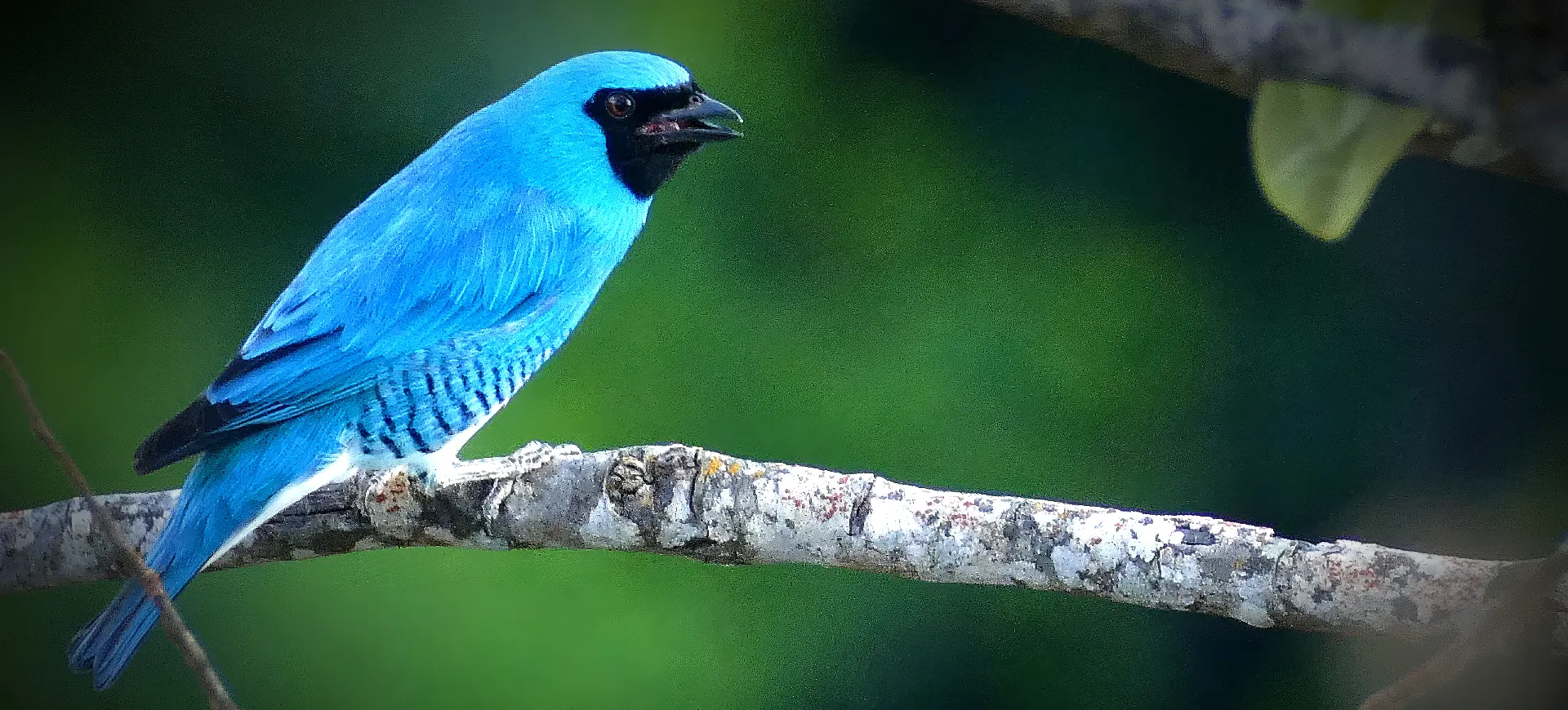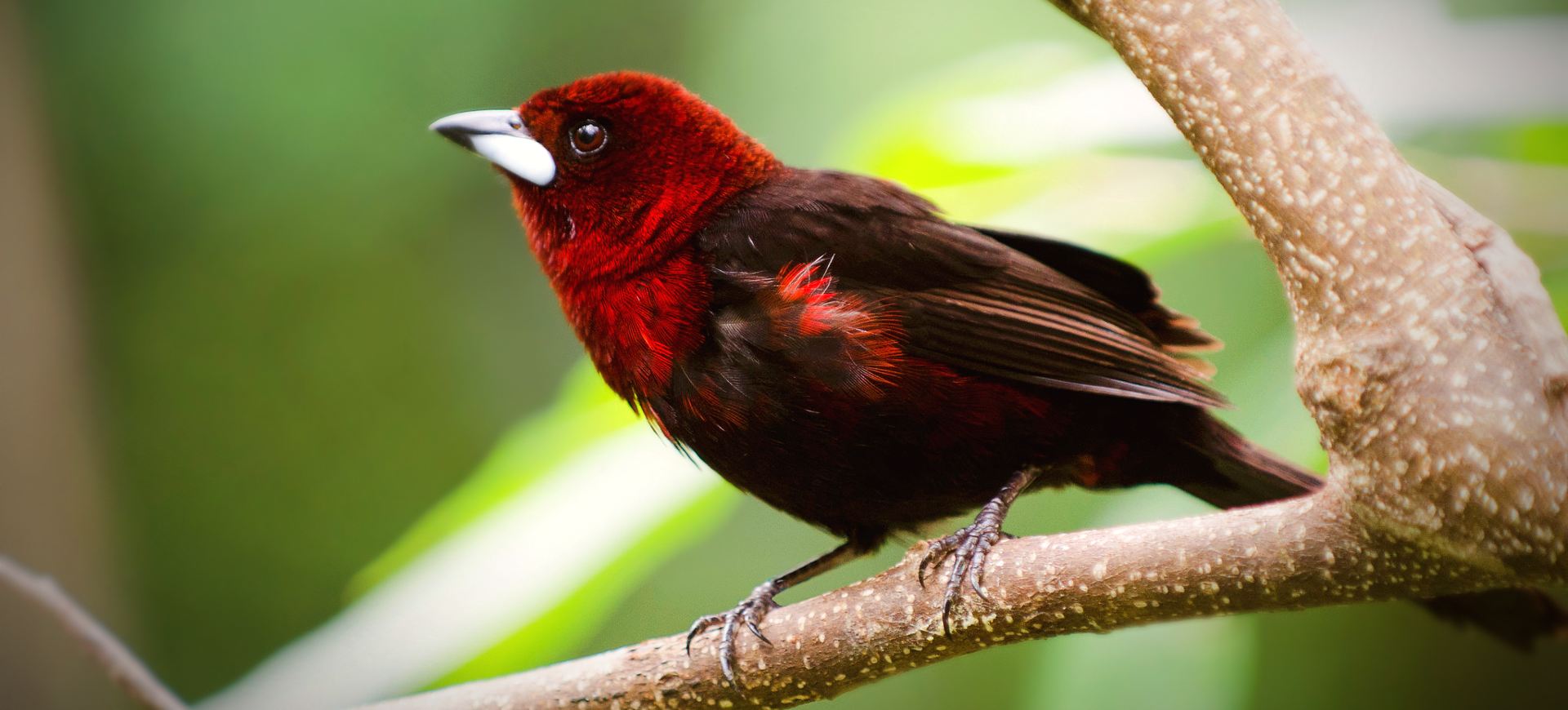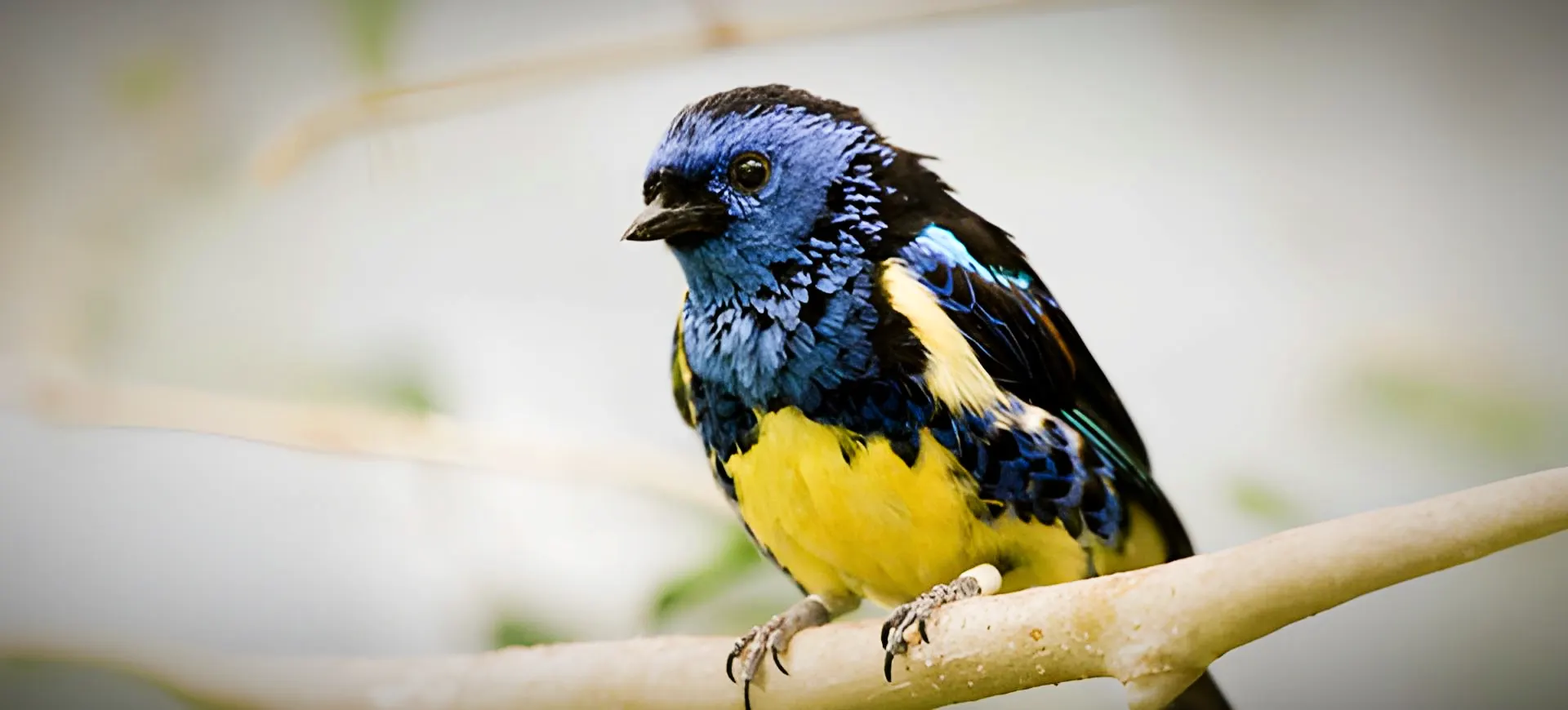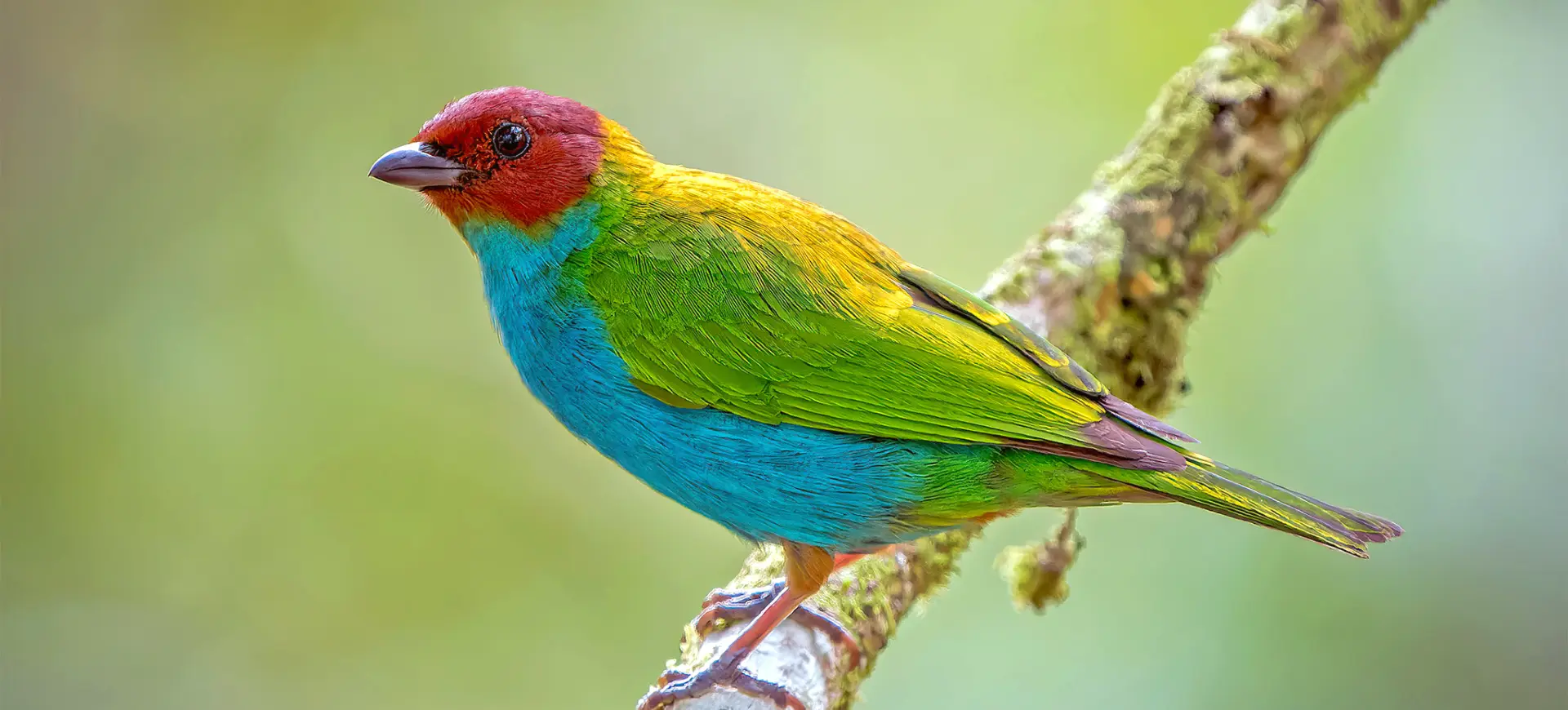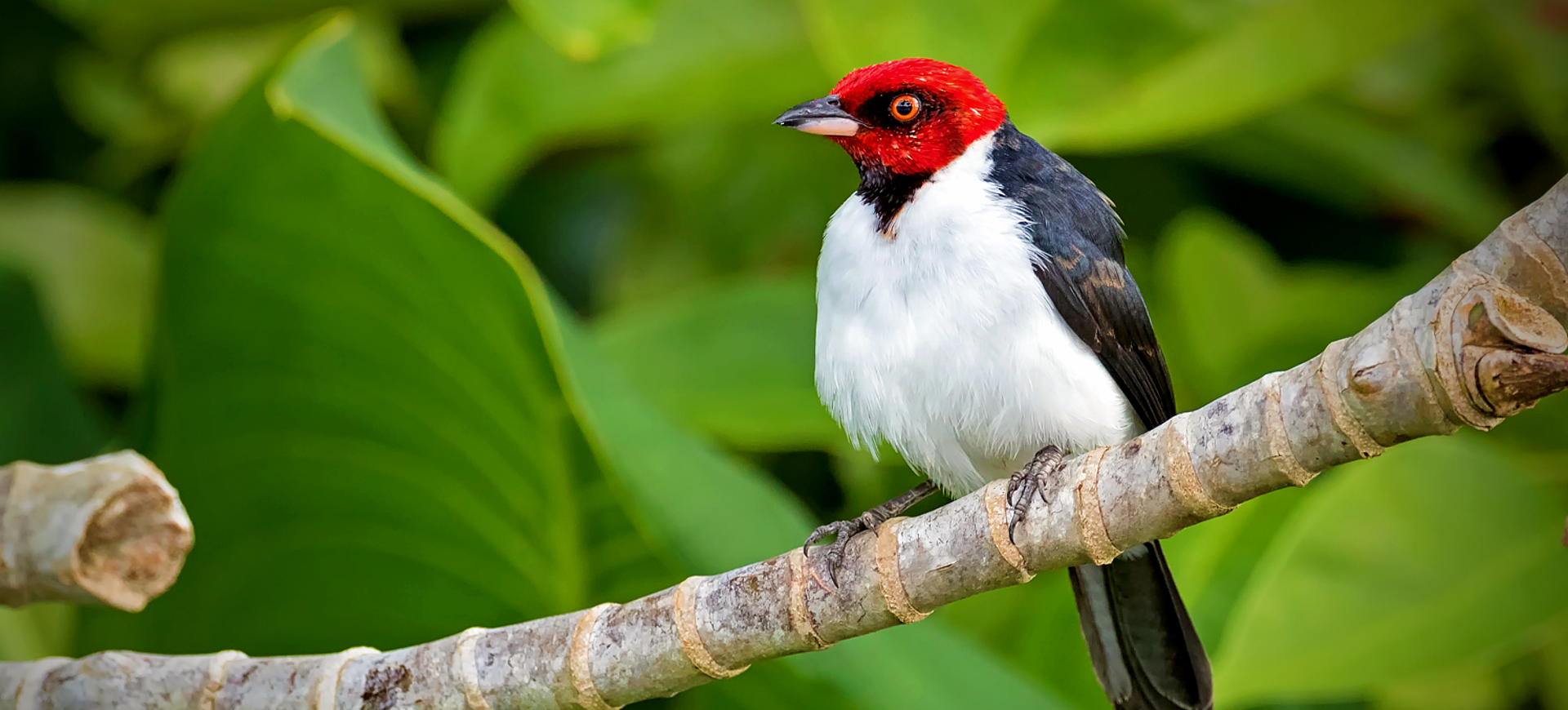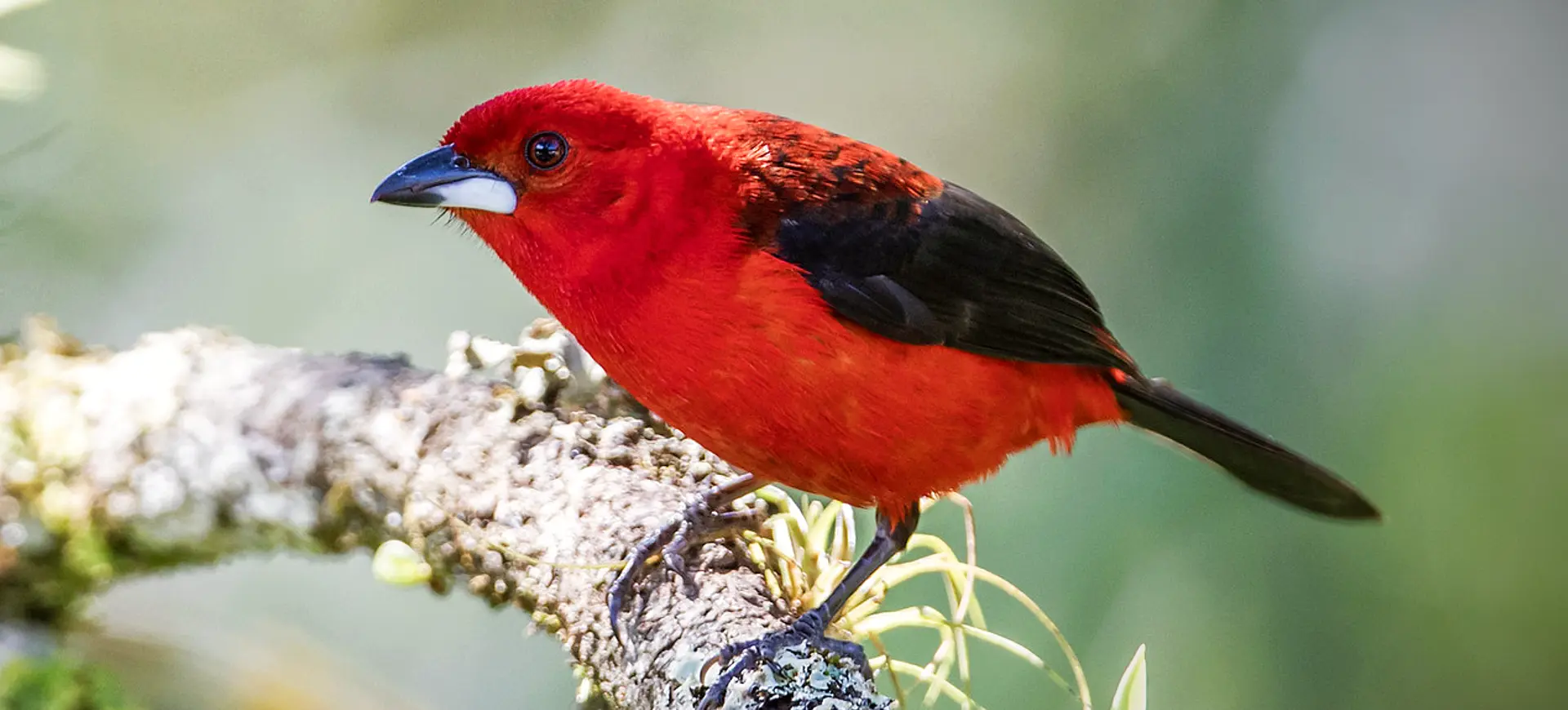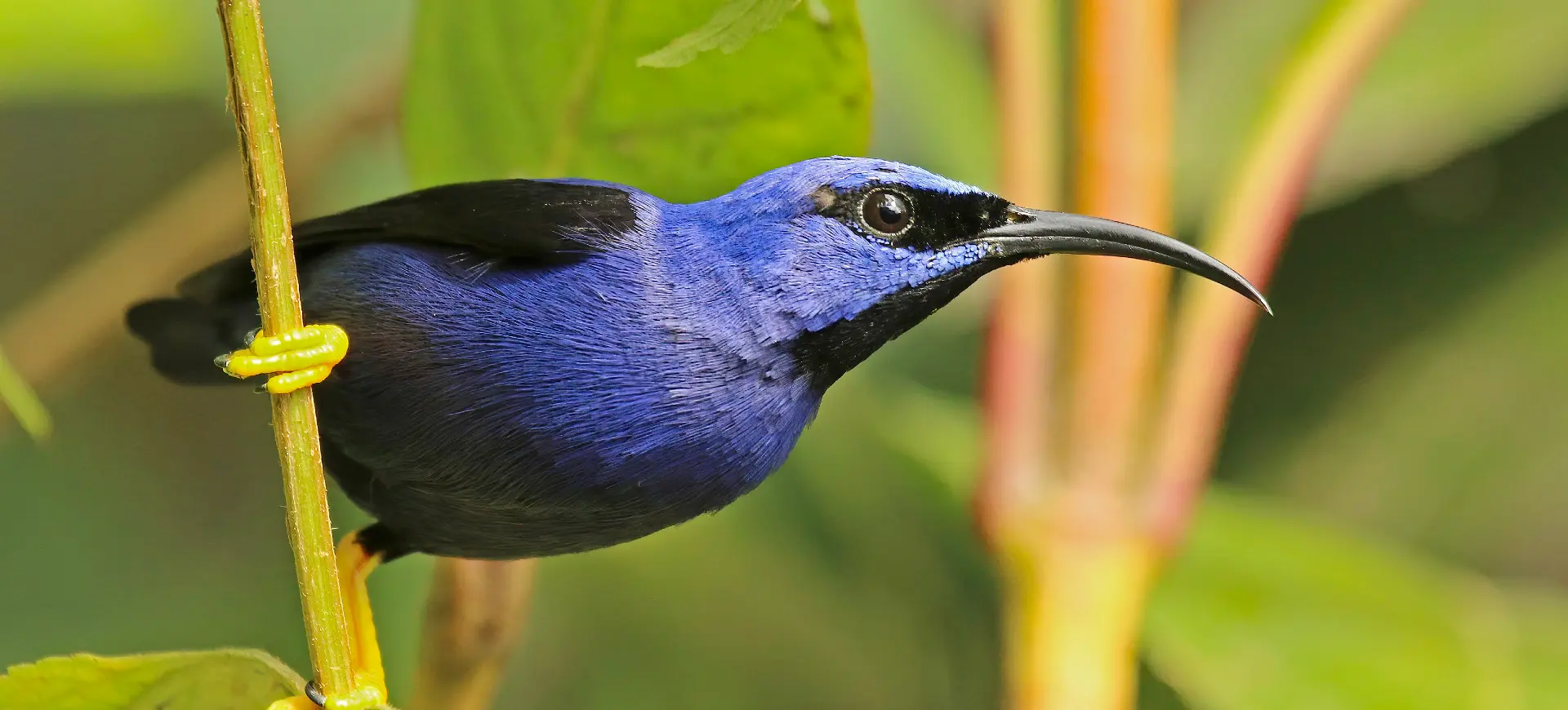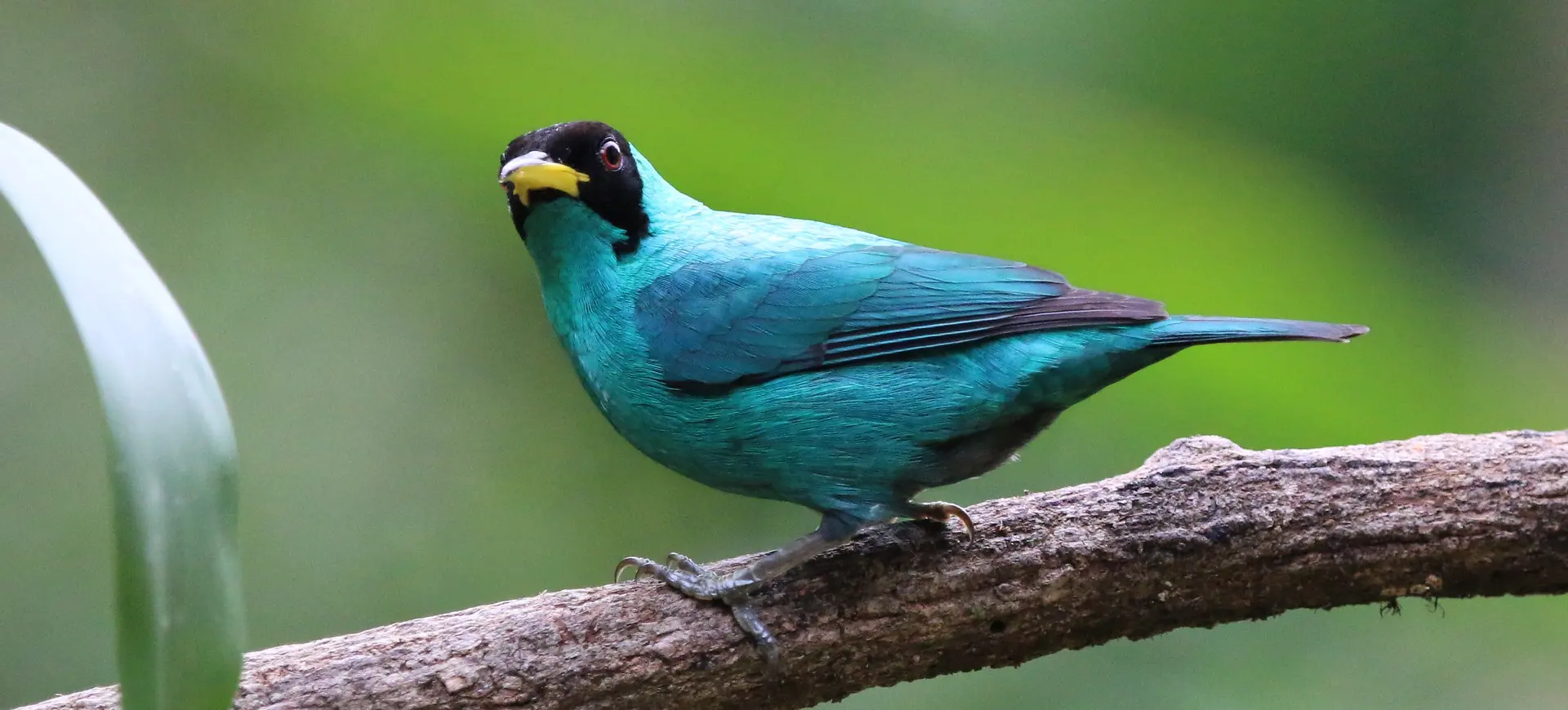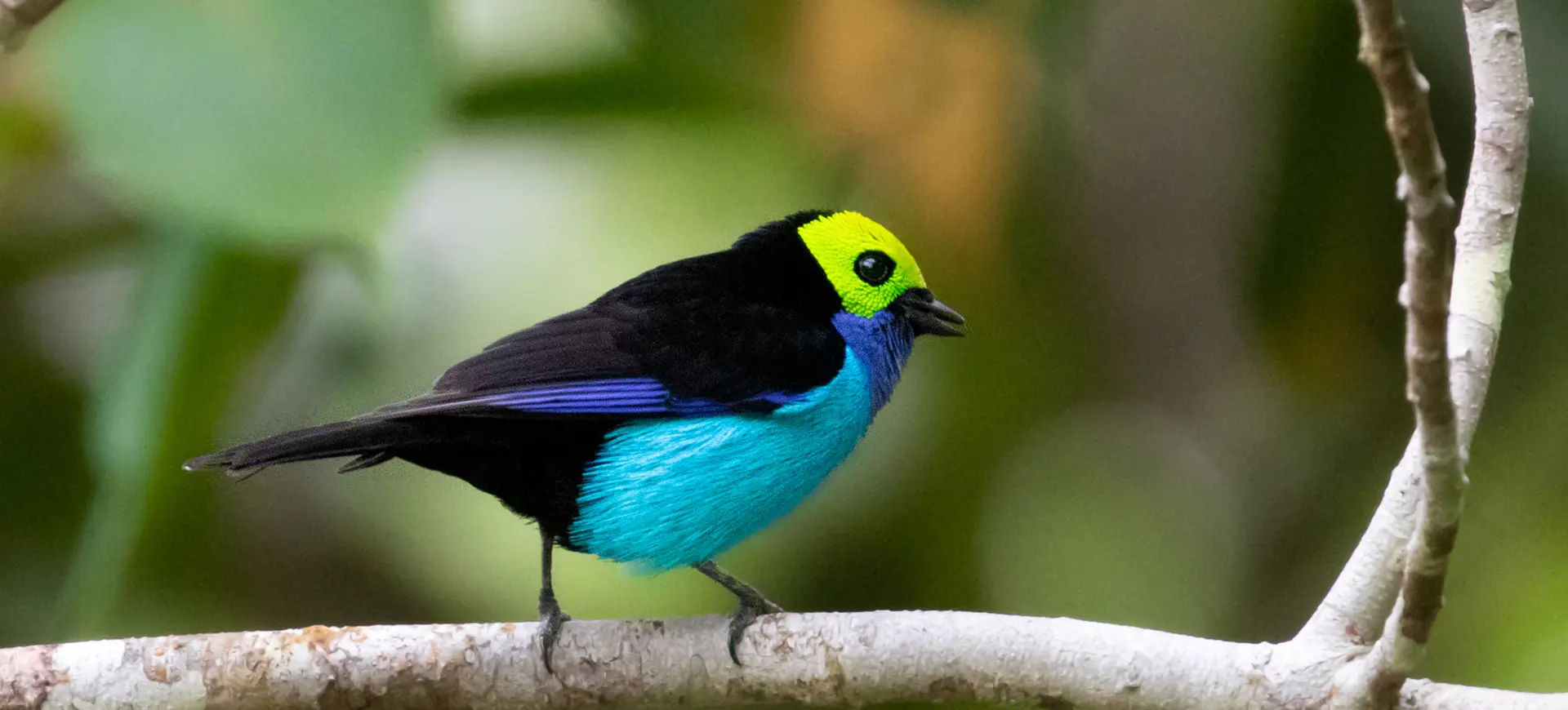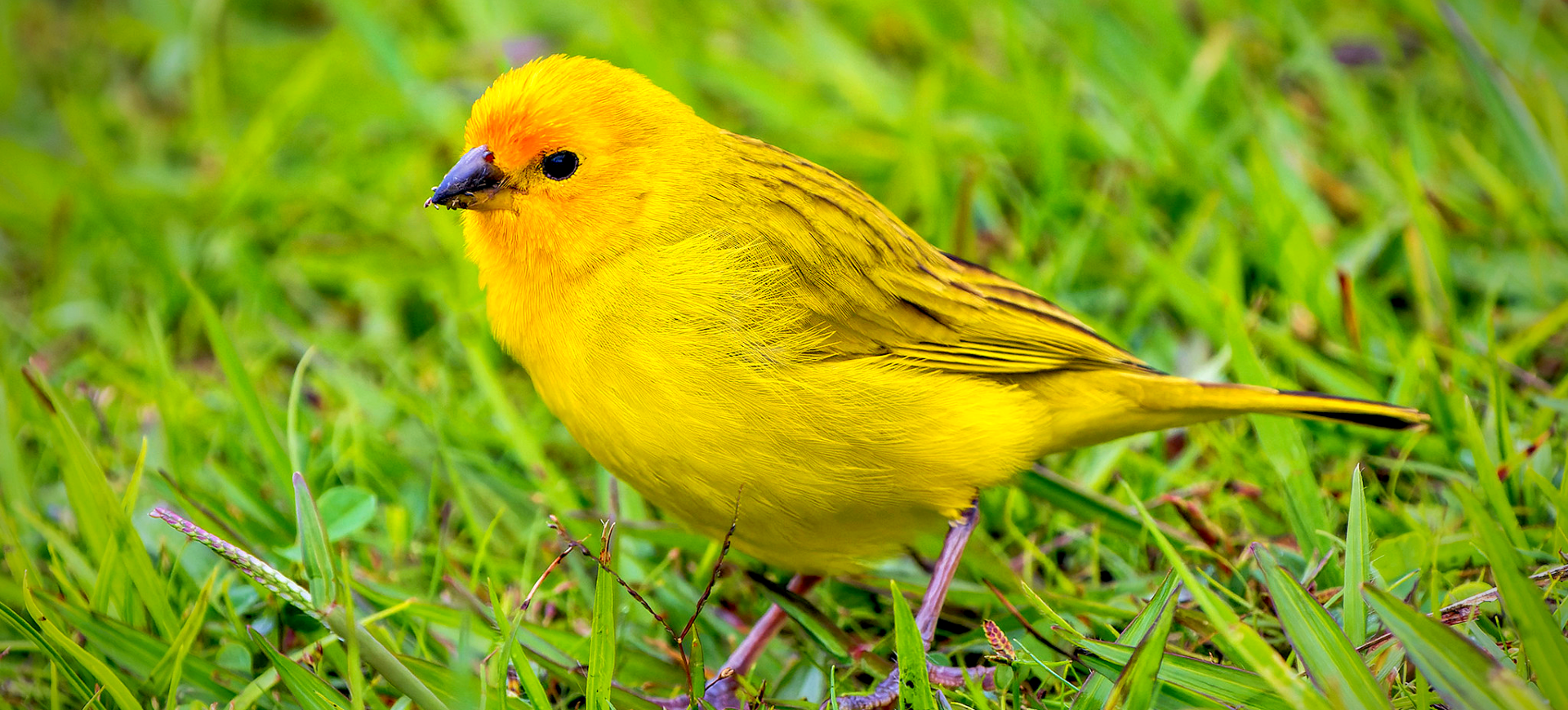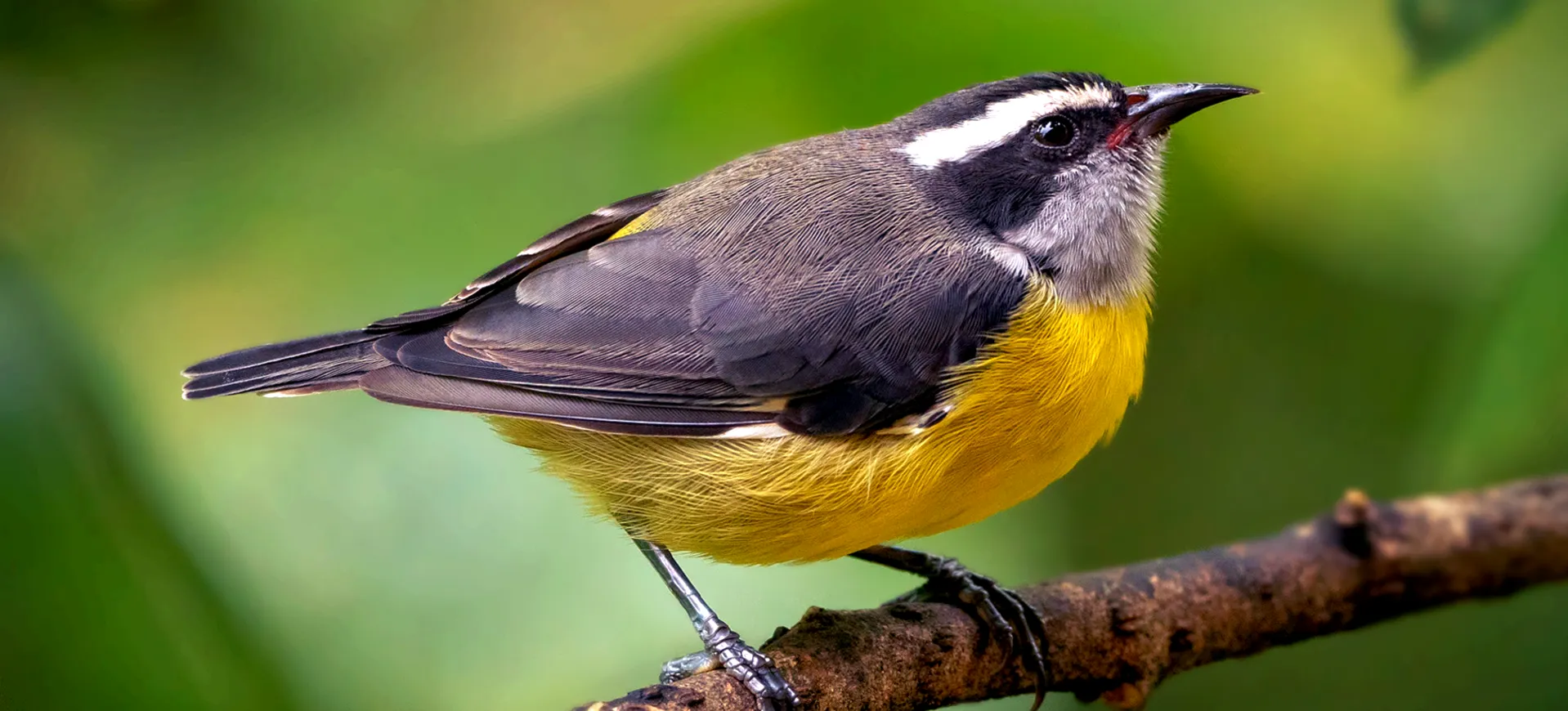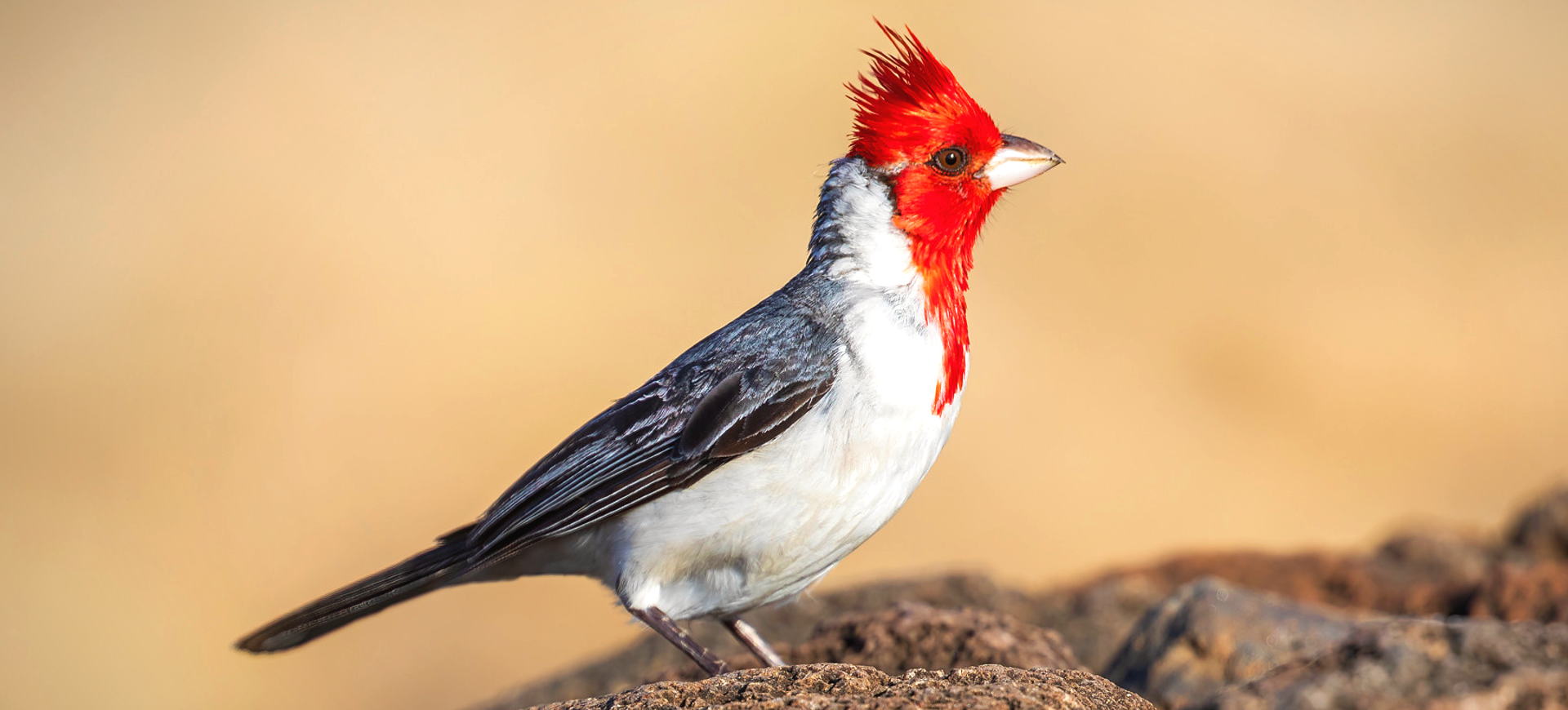Overview
The Blue-gray Tanager, known scientifically as Tangara episcopus, is a small, vibrantly colored bird native to Central and South America. Its plumage is primarily a soft, light blue-gray, with variations in shade depending on the region. Some populations have a more azure or greenish tinge. Notably, it lacks the striking patterns seen in many other tanager species, presenting a more uniform coloration. This bird is common in wild and urban areas, often observed in gardens and parks.
Blue-gray Tanagers are social and adaptable birds, typically seen in pairs or small flocks. They are known for their sweet, musical calls and songs, which add to the charm of their presence. These birds are active foragers, often seen hopping among branches for food. They have a particular fondness for fruit, but their diet is diverse, including various plant and animal matter.
Their adaptability to different environments, including urban areas, has helped them thrive in various habitats. Blue-gray Tanagers often benefit from human-altered landscapes where fruit-bearing plants are common. Despite being widespread and common, they play a crucial role in their ecosystems, particularly in seed dispersal and insect control. Their presence is a testament to the resilience and adaptability of nature.
Taxonomy
Kingdom
Phylum
Class
Order
Family
Genus
Species
Type
Current distribution:
The Blue-gray Tanager, with its broad distribution, is a remarkably adaptable bird that ranges from Mexico to the north through Central America. Its range extends deep into South America, reaching as far south as northern Bolivia and central Brazil. This expansive geographical reach includes a variety of ecosystems, such as tropical rainforests, mountainous regions, and urban environments. Their ability to thrive in these diverse habitats, from the Amazon's dense canopy to Central America's suburban gardens, underscores their ecological versatility.
In both rural and urban settings, Blue-gray Tanagers are a common and familiar sight, contributing significantly to the avian biodiversity of these areas. Their stable population across this vast range is a testament to their adaptability and resilience to environmental changes. Despite the challenges posed by habitat modification and urbanization in many parts of their range, no immediate threats are leading to significant declines in their population. This stability in their numbers reflects their ability to exploit various food sources and adapt to different habitats, ensuring their continued presence across the Americas.
Physical Description:
The Blue-gray Tanager is a medium-sized bird with a slender, streamlined body and a short, blunt beak adapted for fruit consumption. The most striking feature is its blue-gray plumage, which covers most of the body. The intensity and hue of the blue-gray color can vary geographically, with some birds appearing more vividly blue while others have a more subdued tone. The underparts are usually lighter, and some subspecies have darker wings and tails.
These tanagers have a fairly uniform coloration without significant sexual dimorphism, meaning males and females look quite similar. However, males may have slightly brighter plumage during the breeding season. Their eyes are typically dark, providing a sharp contrast to their light plumage. Young birds are duller in color, gaining the full vibrancy of adult plumage as they mature.

Lifespan: Wild: ~8 Years || Captivity: ~10 Years

Weight: Male & Female: 1.1-1.4 oz (30-40 g)

Length: Male & Female: 6-7 in (15-18 cm)

Top Speed: 30 mph (48.2 kph)
Characteristic:
Native Habitat:
The Blue-gray Tanager is found in many habitats, from tropical rainforests to open woodlands and urban areas. They prefer areas with abundant fruiting trees and shrubs, which provide their primary food source. These birds are highly adaptable, thriving in pristine natural habitats and areas altered by human activity, such as agricultural lands and city parks.
Their ability to thrive in various environments demonstrates their ecological flexibility. Blue-gray Tanagers are often found at forest edges, clearings, and secondary growth areas, where they can take advantage of various vegetation types. They are typically found at lower elevations but can be found up to medium altitudes in some parts of their range.
Climate Zones:
Biomes:
Biogeographical Realms:
Continents:
Diet:
Diet & Feeding Habits:
Blue-gray Tanagers have an omnivorous diet, primarily feeding on fruits, nectar, and insects. They play a vital role in seed dispersal for many fruiting plants, as they consume the fruit and excrete the seeds elsewhere. Their preference for ripe, soft fruits makes them frequent visitors to fruiting trees and shrubs. In addition to fruits, they consume many insects, especially during the breeding season, when protein is crucial for chick development.
These birds are adaptable foragers who exploit various food sources in natural and human-modified environments. They often visit bird feeders in urban and suburban areas, where they are welcomed for their beauty and pleasant song. Their feeding habits make them important players in controlling insect populations and maintaining the health of plant communities.
Mating Behavior:
Mating Description:
Blue-gray Tanagers are socially monogamous, often forming long-term pair bonds. During the breeding season, males perform courtship displays, which include song and visual displays like wing flapping and feather fluffing. These displays serve to attract females and also to strengthen pair bonds. Nest building is primarily undertaken by the female, with the male sometimes assisting.
Their nests are typically built in trees or shrubs, often well-hidden among foliage. The female lays 2-3 eggs, which she incubates for about 14 days. Both parents participate in feeding and caring for the chicks, which fledge approximately 17 days after hatching. Parental care is essential for the survival of the young, as it helps them learn essential survival skills, including foraging and avoiding predators.
Reproduction Season:
Birth Type:
Pregnancy Duration:
Female Name:
Male Name:
Baby Name:
Social Structure Description:
Blue-gray Tanagers are social birds, often seen in pairs or small groups. They are not territorial, typically foraging and moving around relaxedly. During the breeding season, pairs become more solitary, focusing on nesting and raising their young. In flocks, they can be quite communicative, using a variety of calls to maintain contact.
Their social nature extends to mixed-species flocks, where they often join other tanager species and different birds. This behavior provides increased foraging efficiency and predator detection. Blue-gray Tanagers have a hierarchical social structure within groups, with dominant individuals having better access to food and preferred perching sites.
Groups:
Conservation Status:
Population Trend:
The Blue-gray Tanager population is considered stable and widespread across its range. This stability can be attributed to their adaptability to various habitats, including those influenced by human activities. They are common in many areas, often among the most frequently observed bird species in their range.
Their resilience in facing environmental changes and habitat alterations highlights their ecological flexibility. Continued habitat preservation, especially in areas of high biodiversity, is important for maintaining healthy populations of Blue-gray Tanagers and the many other species that share their habitats.
Population Threats:
While currently not facing significant threats, Blue-gray Tanagers, like many bird species, could be affected by habitat loss and degradation. Deforestation and land-use changes in their native habitats could impact their food sources and nesting sites. Additionally, pesticide use in agriculture poses a risk, potentially reducing their insect prey and affecting their health.
Climate change also poses a long-term threat, potentially altering their habitats and the availability of food resources. However, their adaptability to different environments, including urban areas, provides them with a buffer against some of these threats.
Conservation Efforts:
Conservation efforts for Blue-gray Tanagers are currently focused on habitat preservation and environmental protection. Protecting tropical and subtropical forests and other key habitats is crucial for maintaining healthy populations. Efforts to reduce deforestation and promote sustainable land use in their range benefit the Blue-gray Tanager and many other species.
Environmental education and awareness campaigns can help promote the importance of these birds and their habitats. In urban areas, promoting bird-friendly practices, such as planting native fruiting trees and reducing pesticide use, can support their populations and contribute to urban biodiversity.
Additional Resources:
Fun Facts
- Blue-gray Tanagers inhabit various environments, from dense rainforests to urban gardens.
- They have a flexible diet, primarily eating fruits, nectar, and insects, making them important for seed dispersal and pest control.
- Depending on their location, their feathers can range in the shade from light blue-gray to a more vivid azure.
- These tanagers are often found in pairs or small flocks, and they enjoy mingling in mixed-species groups.
- Known for their sweet and melodious calls, they add a pleasant auditory backdrop to their habitats.
- In the wild, Blue-gray Tanagers can live up to 10 years and sometimes longer in captivity.
- Females build nests in various locations, from trees to shrubs, often hidden among dense foliage.
- Both male and female Blue-gray Tanagers take part in raising their young, showcasing strong parental instincts.
- They are among the few bird species adapted well to urban environments, often seen in city parks and gardens.
- Their widespread presence and stable population symbolize ecological adaptability and resilience.









